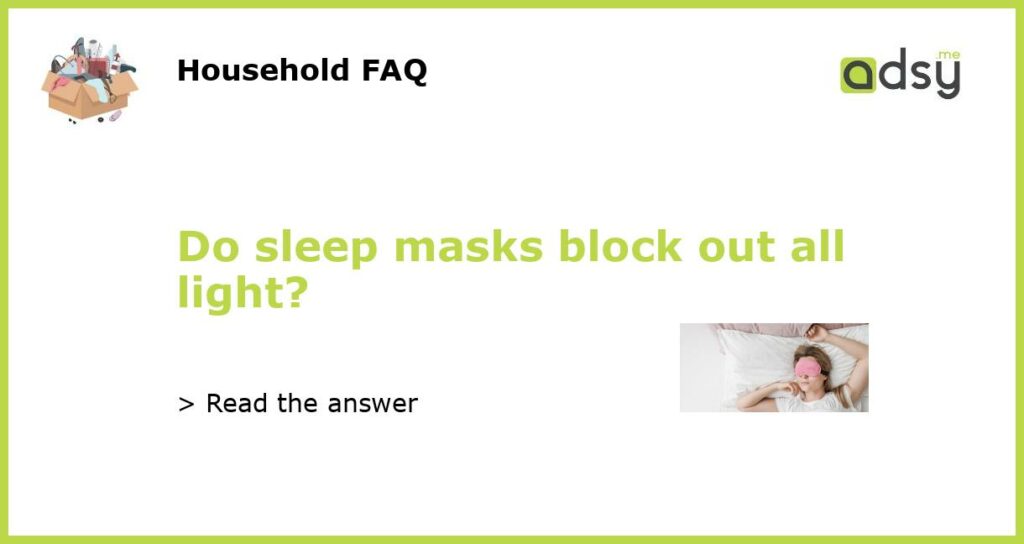How Sleep Masks Work
Sleep masks, also known as eye masks or blindfolds, have gained popularity as a solution to improve sleep quality. These masks are designed to block out light and create darkness, promoting a deeper and more restful sleep. But do sleep masks really block out all light?
When it comes to sleep masks, it’s important to understand how they work. Sleep masks are typically made of soft and lightweight materials, such as foam, silk, or cotton. They are designed to fit snugly over the eyes, creating a barrier between your eyes and the surrounding environment.
The main purpose of a sleep mask is to block out light and create a dark environment. This darkness stimulates the production of melatonin, a hormone that regulates sleep and wakefulness. Melatonin is naturally produced by the body when it gets dark, and it helps signal to the body that it’s time to sleep.
However, it’s important to note that not all sleep masks are created equal. While most sleep masks do a good job of blocking out a significant amount of light, it’s rare for a sleep mask to completely eliminate all light. Some light may still seep in around the edges of the mask or through thinner materials.
Factors That Affect Light Blocking
Several factors can affect the light-blocking capabilities of a sleep mask. The material and thickness of the mask play a significant role in determining how well it blocks light. Thicker and more opaque materials, such as foam or heavy fabrics, tend to provide better light-blocking properties.
The fit and design of the sleep mask also play a role in its light-blocking abilities. A well-fitted sleep mask that contours to the shape of your face and has adjustable straps can help minimize the amount of light that seeps in around the edges.
Another factor to consider is the amount of pressure applied by the sleep mask. If the mask is too loose, it may not apply enough pressure to create a snug fit, allowing light to enter. On the other hand, a mask that is too tight may be uncomfortable and potentially disrupt sleep.
Alternatives to Sleep Masks
If you find that sleep masks are not providing enough darkness for your needs, there are alternatives you can consider. Blackout curtains or blinds can help create a dark environment in your bedroom by blocking out external light sources.
You can also try using earplugs to block out noise, as external sounds can also disrupt your sleep. Soft silicone earplugs are a popular option as they are comfortable to wear and effectively block out noise.
Additionally, some people find that wearing both a sleep mask and earplugs together can provide an even more immersive and restful sleep experience.
Tips for Better Light Blocking
If you want to maximize the light-blocking capabilities of your sleep mask, here are some tips to consider:
- Choose a sleep mask made of thick and opaque materials, such as foam or heavy fabrics.
- Look for a sleep mask with adjustable straps to ensure a snug fit.
- Consider combining a sleep mask with blackout curtains or blinds to create a darker bedroom environment.
- Experiment with different sleep mask styles and designs to find the one that works best for you.
- Regularly clean your sleep mask to remove any oils or debris that may affect its light-blocking properties.
While sleep masks are designed to block out light and create a dark sleep environment, it’s rare for them to completely eliminate all light. Factors such as the material, fit, and design of the sleep mask can affect its light-blocking capabilities. If you find that a sleep mask is not providing enough darkness, consider using alternative methods such as blackout curtains, earplugs, or a combination of both. Experiment with different sleep mask styles and designs to find the one that suits you best, and don’t forget to keep your sleep mask clean to maintain its light-blocking properties.






